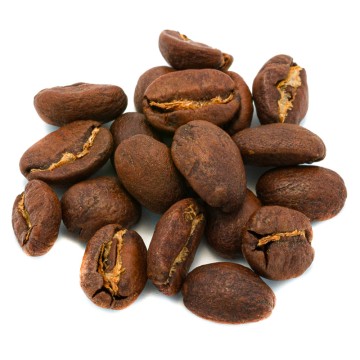That the taste of coffee goes well with that of walnuts is demonstrated by the countless dessert recipes that combine these two ingredients, so flavoring a good arabica with walnut flavor seemed like a step almost natural.
The walnut and the coffee plant, origin of the plants and diffusion
The history of coffee is ancient but relatively recent, at least in Europe, if compared to that of white walnut, but let's go in order. Coffee can be obtained from various plants of the Coffea genus of the Rubiaceae family, in practice only two are used commercially, the more prized Coffea arabica and Coffea canephora which is commercially called robusta. The only other Coffea species that is of commercial interest to the coffee industry is Coffea liberica which as its name suggests is used to make coffee in Liberia, but has also been used in crossbreeding to obtain varieties of arabica that resist better than the terrible rust of coffee leaves.
Coffea arabica originates from Ethiopia and in fact in the African country there is a coffee ceremony which has an important social and cultural value. In Europe it was introduced by the Arabs, or rather by the Turks, at the beginning of 1600 in Vienna, in Italy it was imported for the first time in Venice at the end of 1600. The first use of the plant was not to obtain a drink similar to the one known today and dates back to at least the 9th century, the drink arrived some time later. We know for sure that coffee shops existed in Yemen as early as the 15th century, well before the plant was known in Europe. With the great Spanish and Portuguese explorations they introduced coffee to Central and South America shortly after its introduction in Europe and here, thanks to a favorable climate and soil, cultivation spread successfully and now a large part of the world's coffee production comes from these countries. highly prized.
Walnuts, which are actually a seed (like the part of the coffee plant from which we obtain the beloved drink) and not a fruit, but which in nutrition are defined dried fruit, have a very ancient history in their use. The scientific name of the plant is Juglans regia and it belongs to the Juglandaceae family, the common one is white walnut (but also common walnut or royal walnut), we know that the habitat after the glaciations ranged from the Balkans to Asia Minor and would have been the Greeks introduced it into Europe already between the seventh and fifth centuries BC. We have archaeological evidence that walnuts were used as a food as early as 9000 years ago, while evidence of their importation into Europe by the Greeks comes from Pliny the Elder in his Naturalis Historia. The walnut as it is known is an imposing deciduous tree (i.e. it loses its leaves in autumn) which can reach heights of 25-35 meters and which can become centuries-old. The result is a hard, grained wood that is highly appreciated in carpentry. Coffea arabica is a shrub, that is, a woody plant like a tree but smaller and in which the branches separate from the trunk very low down or even the trunk is not well defined, they often grow in width. Coffea arabica can reach 10 meters in height, some texts say 12, but in any case in cultivation it does not exceed 8. You can also plant it in a pot and in that case it will not exceed one and a half metres. The thing that the coffee plant and the walnut have in common is that they both have fleshy fruits, in botany they are called drupes, but for both the part of our interest is the seed.



 No reward points for this product.
No reward points for this product.















